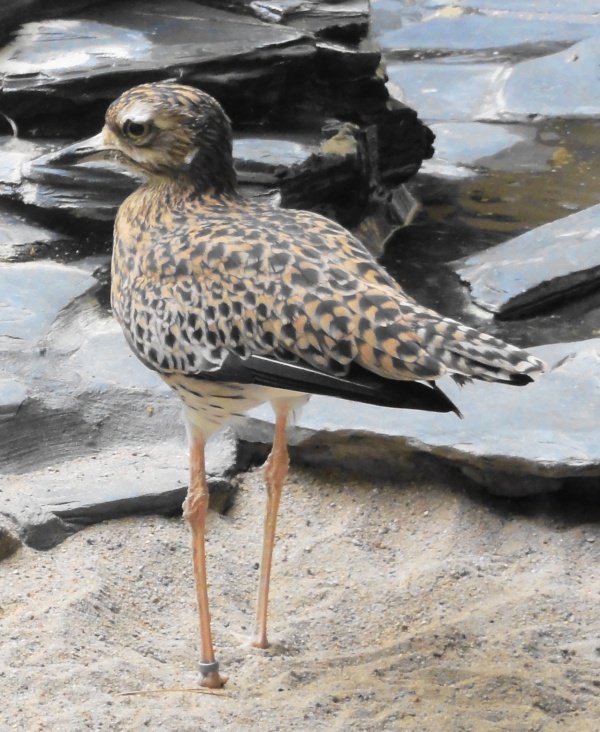Facts About Spotted thick-knee
The spotted thick-knee, also known as the spotted dikkop or Cape thick-knee, is a captivating wader bird from the Burhinidae family. Native to the tropical regions of central and southern Africa, this bird thrives in grasslands and savannas.
Reaching up to 45.5 cm in height, the spotted thick-knee is easily identifiable by its long legs and speckled brown-and-white plumage, which provides excellent camouflage. It has a distinctive large, round head with striking yellow eyes, a stout beak, and long yellow legs with a notably thickened joint, giving rise to the name "thick-knee."
This bird is primarily nocturnal, making it difficult to observe during the day as it tends to squat on the ground to remain concealed. It feeds on a diet of insects, small mammals, and lizards, all of which it catches on the ground. During the breeding season, both male and female spotted thick-knees actively participate in raising their young. They nest on the ground and are known to fiercely defend their nests, sometimes feigning injury to lure predators away.
The spotted thick-knee is found across sub-Saharan Africa, with its range extending from Senegal, Mali, and Mauritania in the west to Ethiopia, Kenya, Tanzania, and South Africa in the east and south. Thanks to its wide distribution and stable population, the IUCN has listed this bird as "Least Concern" regarding conservation status.

 United Arab Emirates
United Arab Emirates